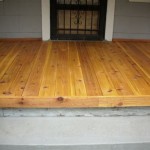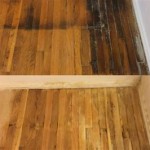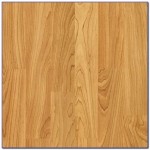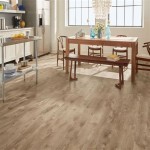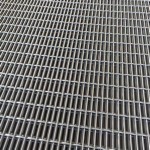Essential Aspects of Cork Underlayment for Laminate Flooring
Cork underlayment is gaining popularity as an excellent flooring solution for laminate flooring. Its unique composition offers numerous benefits that enhance both the performance and durability of laminate flooring. However, choosing the right cork underlayment requires careful consideration of specific requirements and installation details. This article explores the essential aspects of cork underlayment to help homeowners and contractors make informed decisions.
Benefits of Cork Underlayment
Cork underlayment offers several advantages over other types of underlayment materials:
- Excellent Sound Insulation: Cork is an exceptional sound insulator, effectively reducing noise transmission from foot traffic and impact sounds, creating a quieter living environment.
- Thermal Insulation: Cork's natural structure provides thermal resistance, improving the warmth and comfort of the room, especially during cold months.
- Moisture Resistance: Certain types of cork underlayments are treated with water-resistant coatings, providing protection against moisture penetration, preventing damage to the laminate flooring and subfloor.
- Shock Absorption: Cork underlayment absorbs shocks and vibrations, increasing the comfort underfoot and reducing stress on the laminate flooring.
- Underfloor Heating Compatibility: Cork underlayment is suitable for use with underfloor heating systems, allowing heat to pass through without compromising the insulation properties.
Choosing the Right Cork Underlayment
When selecting cork underlayment, consider the following factors:
- Thickness: Cork underlayment thickness ranges from 2mm to 6mm. Choose a thickness that provides the desired level of sound and thermal insulation.
- Density: Higher-density cork underlayment offers better sound insulation and durability.
- Moisture Resistance: Determine if the underlayment needs to be moisture-resistant based on the subfloor and environmental conditions.
- Underfloor Heating Compatibility: Ensure the underlayment is compatible with underfloor heating systems if applicable.
Installation Considerations
Proper installation is crucial to maximize the benefits of cork underlayment:
- Clean Subfloor: Ensure the subfloor is clean, dry, and level before installing the underlayment.
- Unroll and Align: Unroll the underlayment and align the sheets carefully, ensuring proper overlap at the seams.
- Tape Seams: Tape the seams of the underlayment with a specialized underlayment tape for a secure and moisture-resistant bond.
- Trim Excess: Trim any excess underlayment around the edges of the room.
Conclusion
Cork underlayment is an exceptional choice for laminate flooring, offering excellent sound insulation, thermal comfort, and moisture resistance. Understanding the essential aspects of cork underlayment empowers homeowners and contractors to make informed decisions and ensure proper installation. By carefully considering the thickness, density, moisture resistance, underfloor heating compatibility, and installation guidelines, you can optimize the performance and durability of your laminate flooring while creating a more comfortable, quiet, and energy-efficient living space.

Acousticork R60 Cork Underlayment Rolls And S130 Underlay Planks Meets Building Code Inium Association Requirements Pick Up In Los Angeles

Cork Underlay 5mm 5m Sound Insulation Of The Floor

Cork Underlayment Wecork

Qep 200 Sq Ft 4 Wide X 50 Long 6 Mm Thick Cork Plus Sound Dampening Underlayment Roll 72002 The Home Depot

Cork Underlayment 1 2 12mm 102 Sq Ft Box Fund12 Icork Floor

Underlayment Buyer S Guide

Cork Underlayment 1 8 3mm 300 Sq Ft Box Fund 3003 Icork Floor

6mm 1 4 Cork Underlayment Medallion Flooring Distributor

1 2 Acousticork Underlayment Acoustic Cork Sound Proofing Isolation S130 Acousti Stamped Acoustical

Laminate Flooring Underlay Guide Alliance Directory
Related Posts



